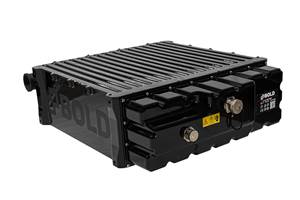Report finds that renewable energy is cost-competitive with traditional power
A joint 2020 Nuclear Energy Agency and International Energy Agency study reports that levelized costs of renewable and nuclear energy generation are falling below that of fossil fuels.

According to from the (IEA, Paris, France) and (NEA, Paris), levelized costs of generating electricity (LCOE) for “low-carbon” generation technologies like wind and nuclear power is increasingly falling, making these technologies cost-competitive with fossil fuel power generation.
The report, which is ninth in a series of studies on electricity generating costs to inform policymakers and other decisionmakers, is based on expected 2025 plant-level costs reported by 243 plants in 24 countries, ranging in energy source from coal and natural gas to solar and wind to nuclear energy.
The report acknowledges that costs vary by country and within countries, and that variable electricity generated by solar and wind power, and policy regulations related to carbon emissions and climate change, all will have effects on electricity generation costs.
Still, through its survey responses, the reporting agencies found that, in most of the represented countries, LCOE for renewable or nuclear energy plants is expected to be lower than that of coal- or gas-powered plants. In the United States, for example (which contributed the highest number of participant plants from one country, at 64), onshore wind and solar power are expected to be, at an assumed emissions cost of $30 per ton of CO2, the least expensive to operate, followed by natural gas, offshore wind, nuclear and coal. In China and India, utility-scale solar power is reported as the least-cost option, followed by onshore wind and solar.
Notably, the report says that onshore wind is expected to have, on average, the lowest levelized costs of electricity in 2025. Nuclear energy is predicted to continue growing as well, and, the report says, will be key to meeting global decarbonization objectives cost-effectively. Offshore wind costs, too, are decreasing, though are not quite at the level of onshore wind yet
In addition to electricity generation, the role of transportation as a factor in global energy consumption and carbon emissions is also discussed. The report cites several studies on the costs of electric vehicles (EV) versus internal combustion engine (ICE) vehicles, concluding that currently, “the overall economic cost of electric vehicles appears clearly greater than that of ICE vehicles, due to the cost of the batteries and of charging infrastructures.” The costs of EVs and ICE vehicles are predicted to converge by 2030-2035, the report says, driven by an expected drop in battery costs (read about hybrid electrical vehicle (HEV) growth and forecasts in “Hybrid electric vehicle market report indicates steady, upward growth”).
Further, the report, a first in this year’s edition, examines the role of levelized costs of storage for various energy types, reporting that as renewable energy such as wind power grows, flexibility options including storage is “becoming more important.” In particular, the report acknowledgesthe growing role of the hydrogen energy sector (read more about how the emerging hydrogen economy is driving development in the composites industry in “Carbon fiber in pressure vessels for hydrogen”).
Read or download the full edition of the IEA and NEA’s “Projected Costs of Generating Electricity” report on .
Related Content
Trinseo demonstrates DLFT, PC for electric vehicle battery packs
The DLFT production process enhances polycarbonate’s performance qualities through high thermal stability that next-gen battery packs demand.
Read MorePolestar 3 sets World Record for longest electric SUV journey on single charge
Unmodified Polestar 3, which uses natural fiber composites in its interiors, achieves 935.44 kilometers on a single charge on U.K. public roads.
Read MoreOn the radar: Innovations in composite battery enclosures
A look at recently reported design, material and process innovations for composites-intensive battery enclosures, developed to support the ramp-up of EV and AAM vehicles.
Read MoreComposites end markets: Batteries and fuel cells (2024)
As the number of battery and fuel cell electric vehicles (EVs) grows, so do the opportunities for composites in battery enclosures and components for fuel cells.
Read MoreRead Next
Ceramic matrix composites: Faster, cheaper, higher temperature
New players proliferate, increasing CMC materials and manufacturing capacity, novel processes and automation to meet demand for higher part volumes and performance.
Read MoreCutting 100 pounds, certification time for the X-59 nose cone
Swift Engineering used HyperX software to remove 100 pounds from 38-foot graphite/epoxy cored nose cone for X-59 supersonic aircraft.
Read MoreNext-gen fan blades: Hybrid twin RTM, printed sensors, laser shock disassembly
MORPHO project demonstrates blade with 20% faster RTM cure cycle, uses AI-based monitoring for improved maintenance/life cycle management and proves laser shock disassembly for recycling.
Read More.jpg;width=70;height=70;mode=crop)












